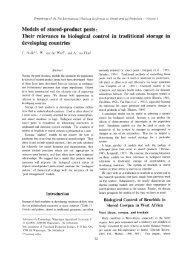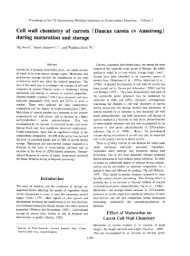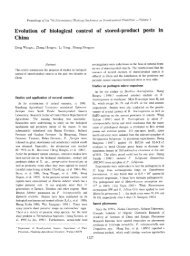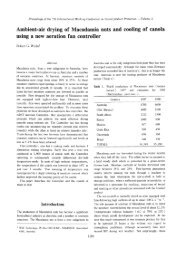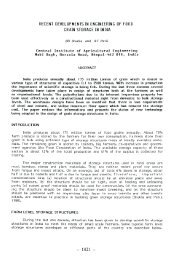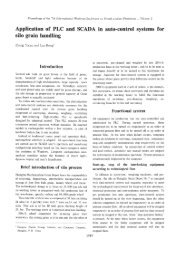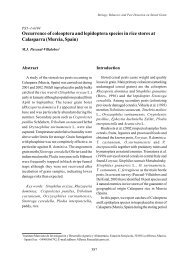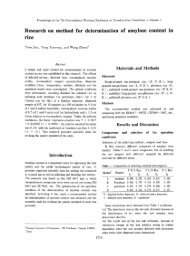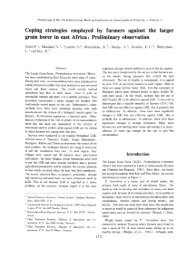Dr. EL Houssine BARTALI - SPIRU Index Page
Dr. EL Houssine BARTALI - SPIRU Index Page
Dr. EL Houssine BARTALI - SPIRU Index Page
You also want an ePaper? Increase the reach of your titles
YUMPU automatically turns print PDFs into web optimized ePapers that Google loves.
Bag storage<br />
Bag storage in warehouses also is practiced and is occasionnaly<br />
combined with bulk storage. This system- requires limited initial<br />
investment compared to real structures. However this system- needs<br />
much more labor for its management and presents some difficulties<br />
for its control. Cheminey systems are made within the grain bulk<br />
using bag in order to allow for air circulation and aeration of<br />
product. This type of storage makes it difficult at acheive grain<br />
treatment against insects. Bags need to be repaired or replaced<br />
for each harvesting campaign. Outdoor sheet covered bag storage<br />
is often practised in order to compensate for shortages in storage<br />
capacities and is usually considered as temporary. The<br />
user then tends to pay insufficient attention for the control of<br />
the stored product leading to some product loss-<br />
Covered bulk storage<br />
Alternative methods for temporary outdoor covered bulk storage have<br />
been developed in countries such as the US, Australia or Europe.<br />
The system components include retaining walls made of corrugated<br />
metal sheets or precast reinforced concrete panels and a cover<br />
sheet.<br />
Such systems present several advantages compared to bag storage<br />
with respect to their cost and efficiency and are being also developed<br />
in other countries. Large storage capacities can be accomodated<br />
using this system.<br />
Underground storage<br />
Underground storage of agricultural products has been practised<br />
for centuries in various places of the world. This system is very<br />
appropriate for on farm storages, Bartali (1987). Investigation<br />
is focused on this alternative storage system- particularly in the<br />
US, Brazil and Morocco. Objectives are to evaluate the advantages<br />
of this system for reduced cost, long term storage, large capacities<br />
and controlled atmosphere. Bartali et al. (1990) investigated<br />
the potential of plastic bags as liners for underground storage<br />
structures. This type of lining tested for barley and wheat storage<br />
has proven very efficient in reducing grain losses as compared<br />
to traditional straw lining. Such improvement will help- rehabilitate<br />
an appropriate low cost and a naturally controlled atmosphere<br />
storage system used for on farm storage.<br />
3. STRUCTURAL DESIGN OF STORAGE STRUCTURES<br />
Several storage structures over the world are made of the two structural<br />
materials, steel and reinforced or prestressed concrete that<br />
can be used alone or combined with each other. Various capacities<br />
can be stored in these storage units but large capacities are often<br />
targeted in order to keep the cost per ton of stored material lower.<br />
The design of such tall structures has to be achieved in order to<br />
meet safety and economy requirements. In the cost repartition, the<br />
structural part of a storage facility can exceed 50 % of the total<br />
cost of the facility.<br />
The system made of stored granular material on one hand and its<br />
holding structure on the other is complex and has its own specificities.<br />
Their mutual interaction has some similarities to a soil-<br />
- 1751 -




